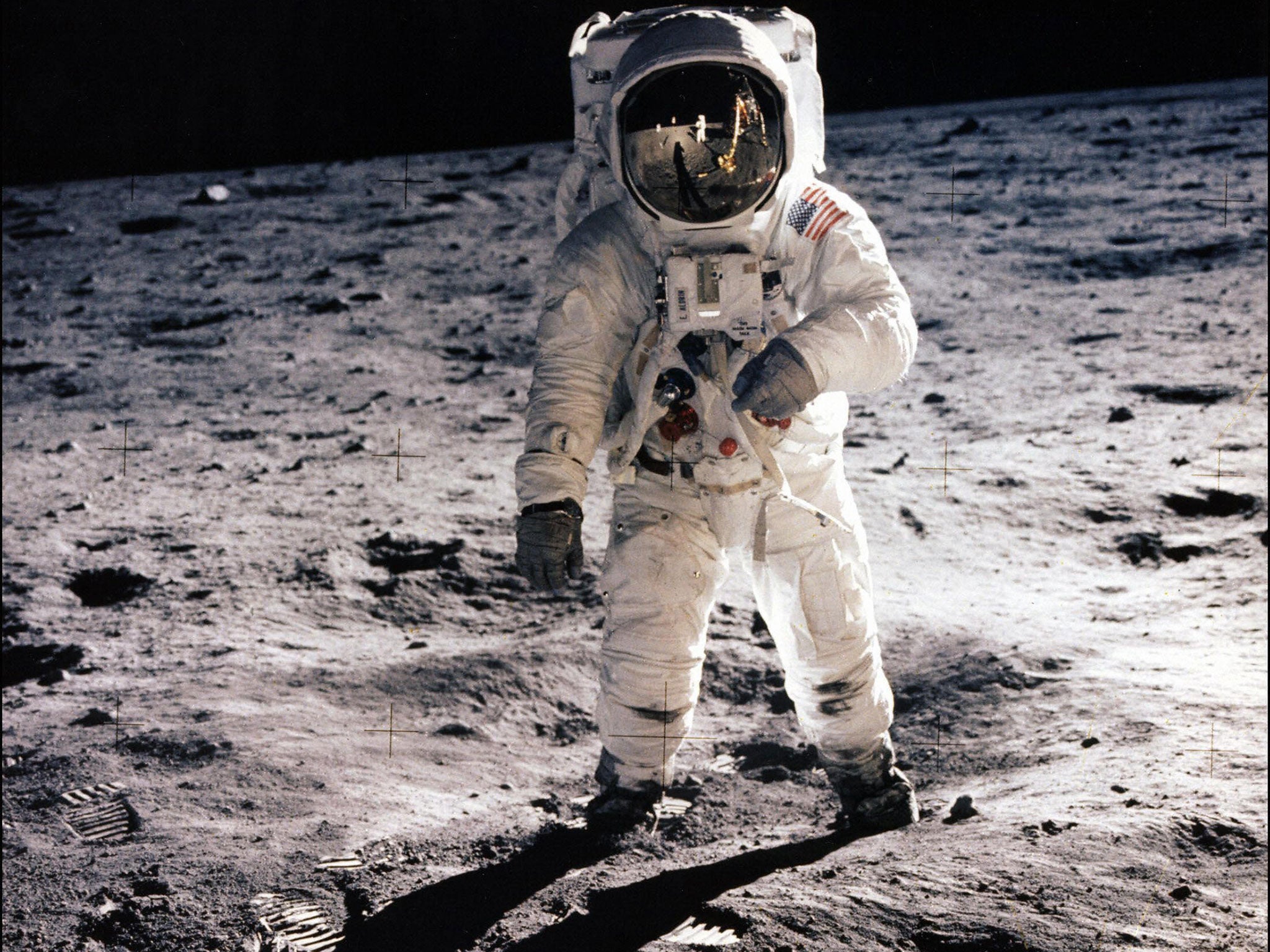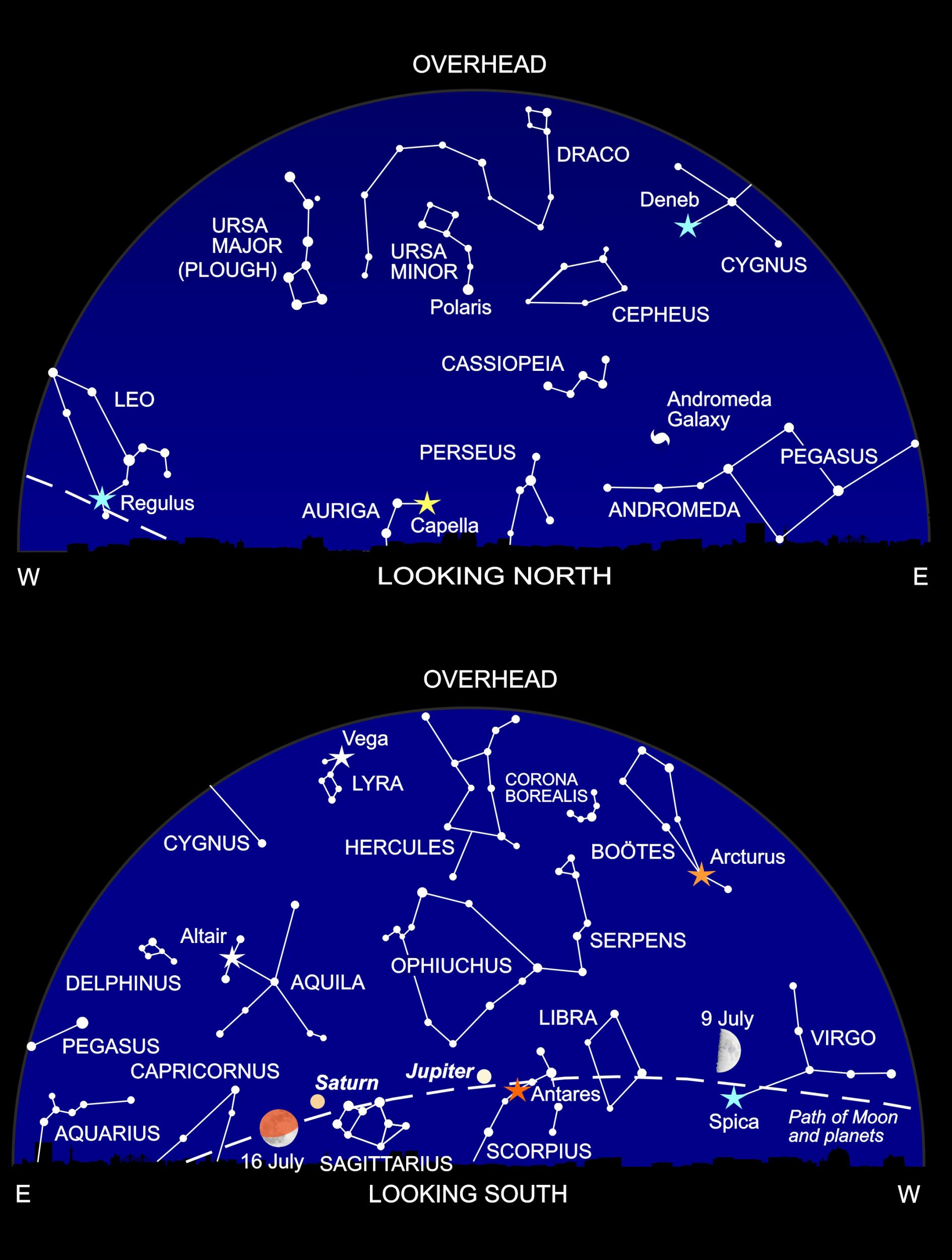Stargazing July: Catch the best lunar eclipse visible from Britain for a decade
Heather Couper and Nigel Henbest tell you how to celebrate the 50th anniversary of the moon landing in style

Your support helps us to tell the story
From reproductive rights to climate change to Big Tech, The Independent is on the ground when the story is developing. Whether it's investigating the financials of Elon Musk's pro-Trump PAC or producing our latest documentary, 'The A Word', which shines a light on the American women fighting for reproductive rights, we know how important it is to parse out the facts from the messaging.
At such a critical moment in US history, we need reporters on the ground. Your donation allows us to keep sending journalists to speak to both sides of the story.
The Independent is trusted by Americans across the entire political spectrum. And unlike many other quality news outlets, we choose not to lock Americans out of our reporting and analysis with paywalls. We believe quality journalism should be available to everyone, paid for by those who can afford it.
Your support makes all the difference.“Magnificent sight out here,” observed Apollo 11 commander Neil Armstrong, as he tentatively made his way down the steps of his spacecraft to the lunar surface on 21 July 1969. “Magnificent desolation,” added his companion astronaut Buzz Aldrin, as he joined Armstrong on our sister world in space.
Make no mistake: you’re in for a lot of moon speak this month, as the world celebrates the 50th anniversary of the first piloted lunar landing.
It was instigated by President John F Kennedy in May 1961.Before congress he declared: “The United States should commit itself to achieving a goal, before this decade is out, of landing a man on the Moon and returning him safely to Earth.”
By all accounts, it was a hollow political speech. Kennedy was not interested in space travel. But it was the height of the Cold War with the Soviet Union: the US had to prove that they had the hardware to shoot missiles to any part of the world – and beyond. And they won.
There is a lot of scepticism about the Apollo missions. Many conspiracy theorists believe they never happened! But the fact is – between 1969 and 1972 – 12 astronauts walked, hopped, drove and played golf on the moon. But did any science come out of the exploration? The answer is yes: more anon.
The moon is Earth’s companion in space, and a sensational sight in our skies. For a moon, it’s ridiculously large compared to its parent planet (it’s more than a quarter the size of Earth) and – even with the unaided eye – you can see its surface features.
The face of “The Man in the Moon” (or “The Rabbit” in other cultures) is easiest to pick out. Early astronomers using telescopes thought that these enormous dark plains were seas, and gave them romantic names: the Sea of Tranquillity; the Sea of Storms.
But romantic they are not. These deep basins are the result of an enormous bombardment caused by vast asteroids that collided with the moon some 3,800 million years ago. They hit the moon so hard that dark lava welled up from its depths, causing the lunar “black eyes” we see today.
Look more closely – and you’ll only need binoculars or a small telescope here – and you’ll find that the whole lunar surface has been battered by meteorite impacts. There are craters everywhere. Earth was similarly attacked; but having a thick atmosphere, the meteoroids often couldn’t make it down to the surface. Those that could create scars – like Meteor Crater in Arizona – but wind and weather have eroded the majority.

In contrast to our verdant Earth, the airless moon is a stark, barren place. But that’s no reason to stop the exploration of our cosmic companion – and to discover more about how our Solar System came to be. There are plans to return to the moon, and to even set up human colonies there.
But: to return to Apollo. One of the legacies of the missions – apart from studying the structure and geology of the moon – was to return to Earth with one-third of a tonne of moon rocks, which have been distributed to research organisations around the world. These rocks have yielded astonishing clues about the moon’s origins.
From the analysis, it seems that our companion world was created in a cosmic cataclysm that almost destroyed the Earth. More than four billion years ago, a wayward planet as big as Mars smashed into our world. The collision practically broke the Earth apart, but it pulled itself together again as a globe of molten lava.
Incandescent droplets splashed into space, forming a fiery version of Saturn’s rings. Rapidly, these droplets coalesced to form the moon – whose present serene face conceals its violent past.

What’s up
It’s all happening low in the south this month, so find yourself a place with a clear southern horizon to enjoy the action...
The two brilliant objects that hit you between the eyeballs are the giant planet Jupiter (featured in our column last month), with rather fainter Saturn to its left. The Earth was closest to Jupiter last month, and on 9 July we reach our nearest to Saturn this year – a “mere” 1,351 million kilometres away. Point a telescope towards the planet, and you’ll see its famous rings along with its largest moon, Titan, which is so big it has an atmosphere even thicker than the Earth’s.
To the lower right of Jupiter lurks the red giant star Antares, in Scorpius, while the stars of Sagittarius lie between the two giant planets. Ancient Babylonian astronomers saw this star-pattern as a mighty archer, with the body of a horse and the torso and head of a man. To us, it looks more like a teapot!
And the full moon is right next to Saturn when it strays into the Earth’s shadow on the evening of 16 July and suffers a partial eclipse. The eclipse begins at about the time the moon rises (9pm) and it emerges from the eclipse around midnight. At its maximum – 10.32pm – two-thirds of the moon is obscured. Though it’s not total, this is the best lunar eclipse visible from Britain for a decade (until 20 December 2029).
Early in the month, you may catch glorious Venus rising in the north east just before the sun. But the Morning Star is slipping downwards to disappear in the dawn twilight by the end of the month.
Diary
4 July Earth at aphelion
5 July Moon near Regulus
9 July, 11.55am Moon at First Quarter near Spica; Saturn at opposition
12 July Moon near Jupiter and Saturn
13 July Moon very near Jupiter
15 July Moon near Saturn
16 July, 10.38pm Full Moon; partial lunar eclipse
25 July, 2.18am Moon at Last Quarter
28 July Moon near Aldebaran
Fully illustrated The Universe Explained (Firefly, £16.99) by Heather Couper and Nigel Henbest is packed with 185 of the questions that people ask about the Cosmos
And Heather and Nigel’s Philip’s 2019 Stargazing (Philip’s £6.99) reveals everything that’s going on in the sky this year
Join our commenting forum
Join thought-provoking conversations, follow other Independent readers and see their replies
Comments